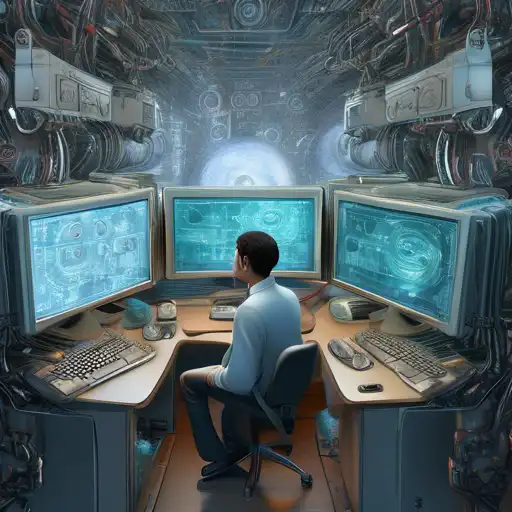Introduction to Computer Vision
Computer vision is a field of artificial intelligence that trains computers to interpret and understand the visual world. By leveraging digital images from cameras and videos and deep learning models, machines can accurately identify and classify objects—and then react to what they "see."
The Science Behind Computer Vision
At its core, computer vision seeks to replicate the complexity of human vision. It involves acquiring, processing, analyzing, and understanding digital images to extract high-dimensional data from the real world in order to produce numerical or symbolic information. This process is often broken down into the following steps:
- Image acquisition
- Image processing
- Feature extraction
- Detection/segmentation
- High-level processing
Applications of Computer Vision
Computer vision technology is being applied in a variety of industries, revolutionizing the way we live and work. Some of the most notable applications include:
- Healthcare: From diagnosing diseases with medical imaging to assisting in surgeries, computer vision is saving lives.
- Automotive: Self-driving cars use computer vision to navigate roads safely.
- Retail: Automated checkout systems and inventory management are transforming the shopping experience.
- Security: Facial recognition and surveillance systems enhance security measures.
Challenges in Computer Vision
Despite its advancements, computer vision faces several challenges. Variability in lighting, viewpoint, scale, and occlusion can affect the performance of vision algorithms. Additionally, the need for large datasets and computational power can be prohibitive for some applications.
The Future of Computer Vision
The future of computer vision is incredibly promising, with ongoing research focused on improving accuracy, efficiency, and accessibility. Innovations in artificial intelligence and machine learning are expected to drive further breakthroughs, making computer vision an integral part of our daily lives.
Conclusion
Computer vision is teaching machines to see, interpret, and understand the visual world in ways that were once the domain of science fiction. As technology continues to evolve, the potential applications of computer vision are limitless, promising to revolutionize industries and improve human lives.
